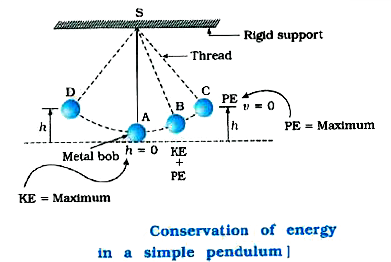Text Solution
Verified by Experts
|
Topper's Solved these Questions
WORK AND ENERGY
KUMAR PRAKASHAN|Exercise QUESTION & ANSWER (TEXUTAL EXAMPLES/NUMERICALS)|18 VideosView PlaylistWORK AND ENERGY
KUMAR PRAKASHAN|Exercise QUESTION & ANSWER (ADDITIONAL NUMERICALS FOR PRACTICE)|50 VideosView PlaylistWORK AND ENERGY
KUMAR PRAKASHAN|Exercise QUESTION & ANSWER (DISTINGUISH BETWEEN THE FOLLOWING)|8 VideosView PlaylistSOUND
KUMAR PRAKASHAN|Exercise QUESTIONS AND ANSWERS (Additional numericals for practice)|16 VideosView Playlist
Similar Questions
Explore conceptually related problems
KUMAR PRAKASHAN-WORK AND ENERGY -QUESTION & ANSWER (ANSWER THE FOLLOWING QUESTIONS IN BRIEF)
- Look at the activities listed below. Reason out whether or not work ...
05:07
|
Play - A car weighing 1000 kg is travelling at the speed of 15ms^(-1). It dec...
04:02
|
Play - A lift carries a maximum weight of 2400 N to a height of 10 m with a c...
03:10
|
Play - (a) Define work done by a constant force. Write its SI unit and define...
06:13
|
Play - Illustrate the law of conservation of energy by discussing the energy ...
Text Solution
|
Play - (a) State the law of conservation of energy. (b) Name two forms of m...
Text Solution
|
Play - Look at the activities listed below. Reason out whether or not work ...
05:07
|
Play - A car weighing 1000 kg is travelling at the speed of 15ms^(-1). It dec...
04:02
|
Play - A lift carries a maximum weight of 2400 N to a height of 10 m with a c...
03:10
|
Play - (a) Define work done by a constant force. Write its SI unit and define...
06:13
|
Play - Illustrate the law of conservation of energy by discussing the energy ...
02:37
|
Playing Now - The vacant space of solid's electronic energy level is called
01:30
|
Play
